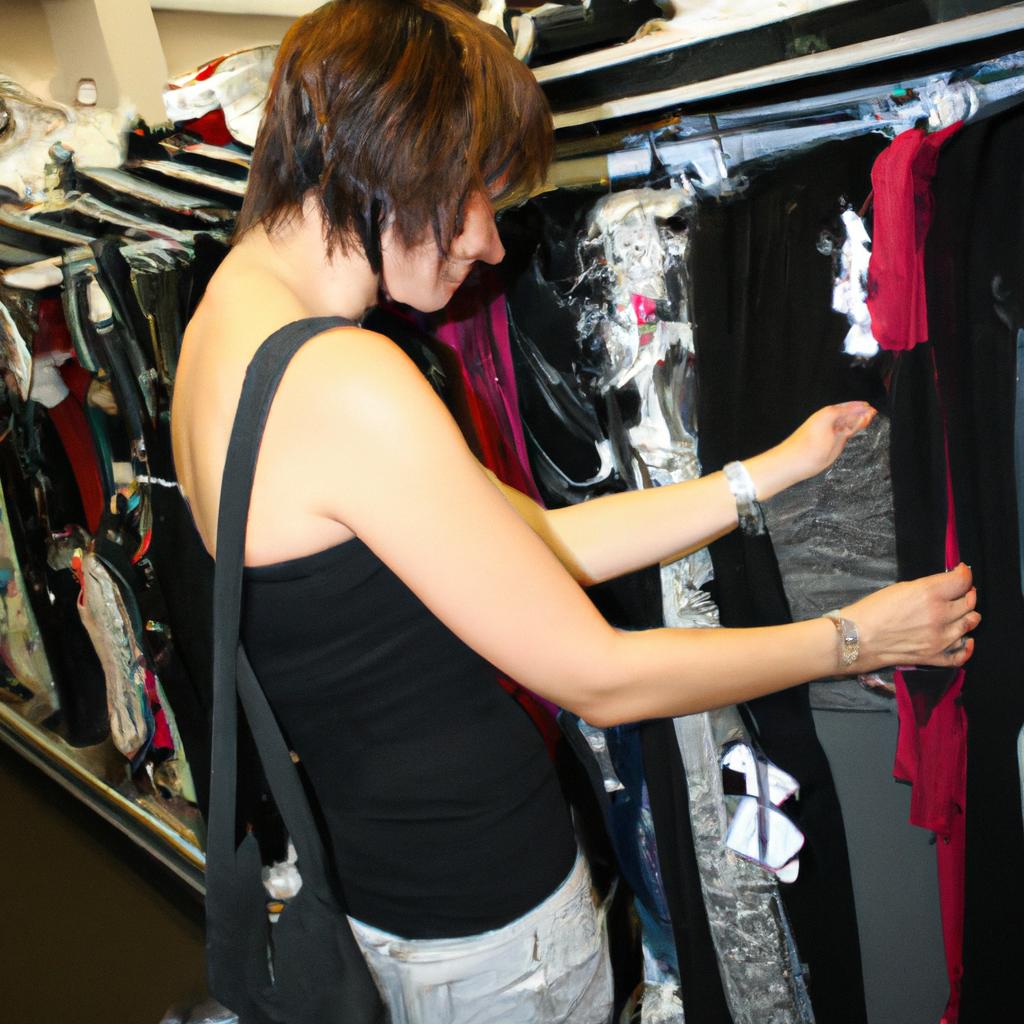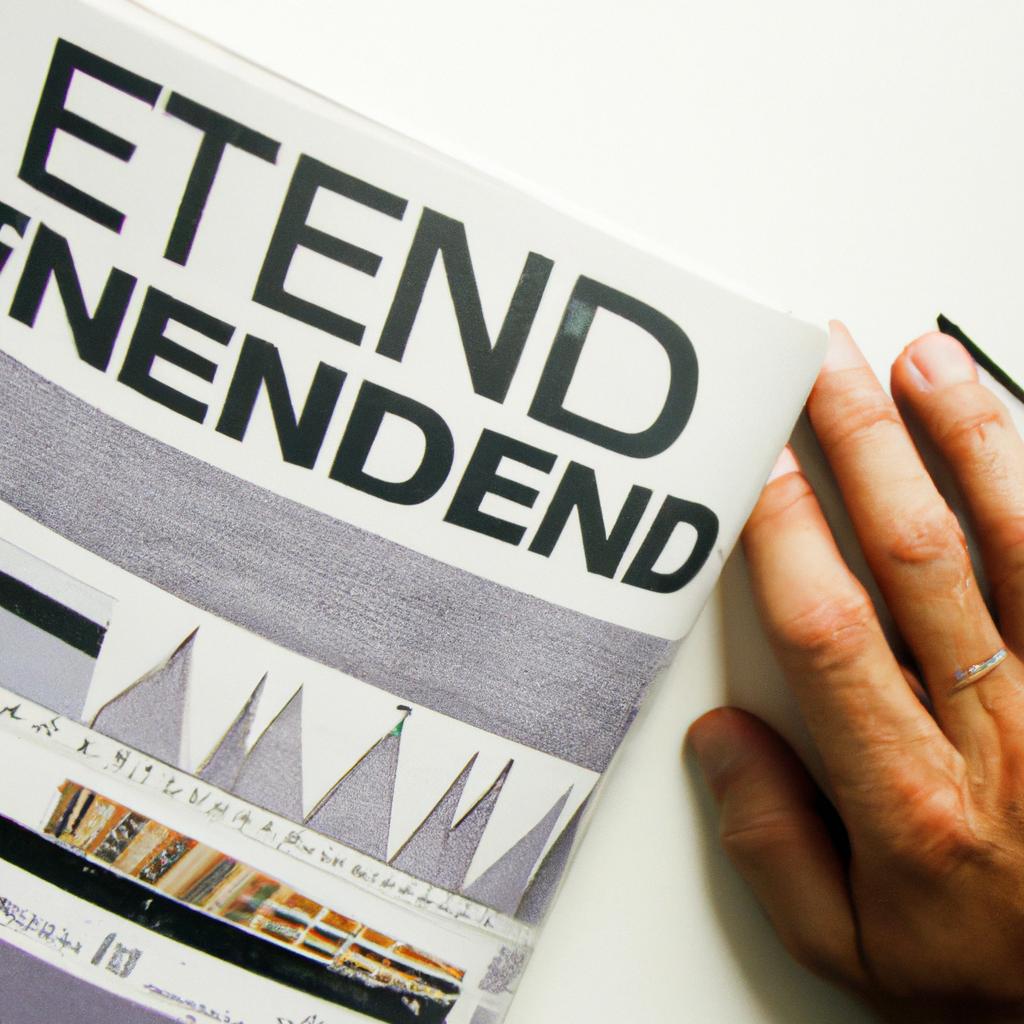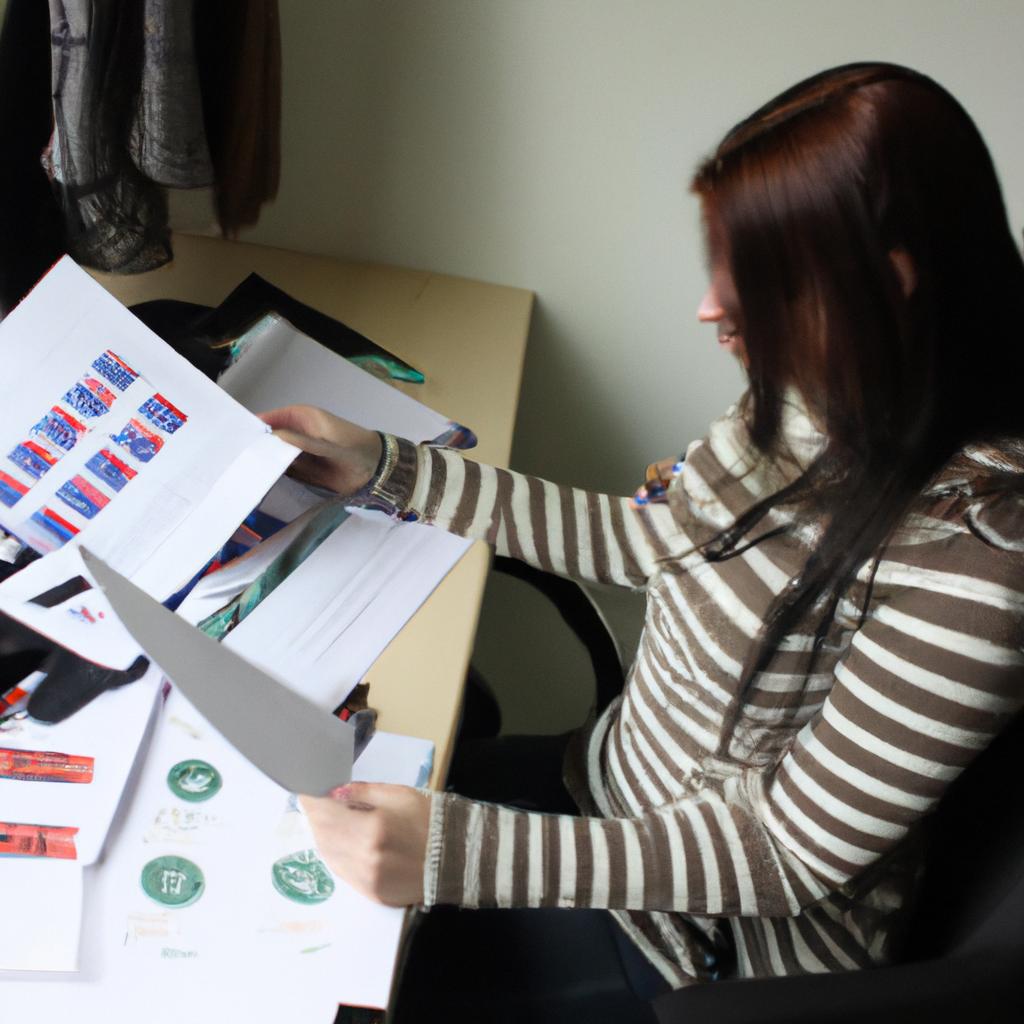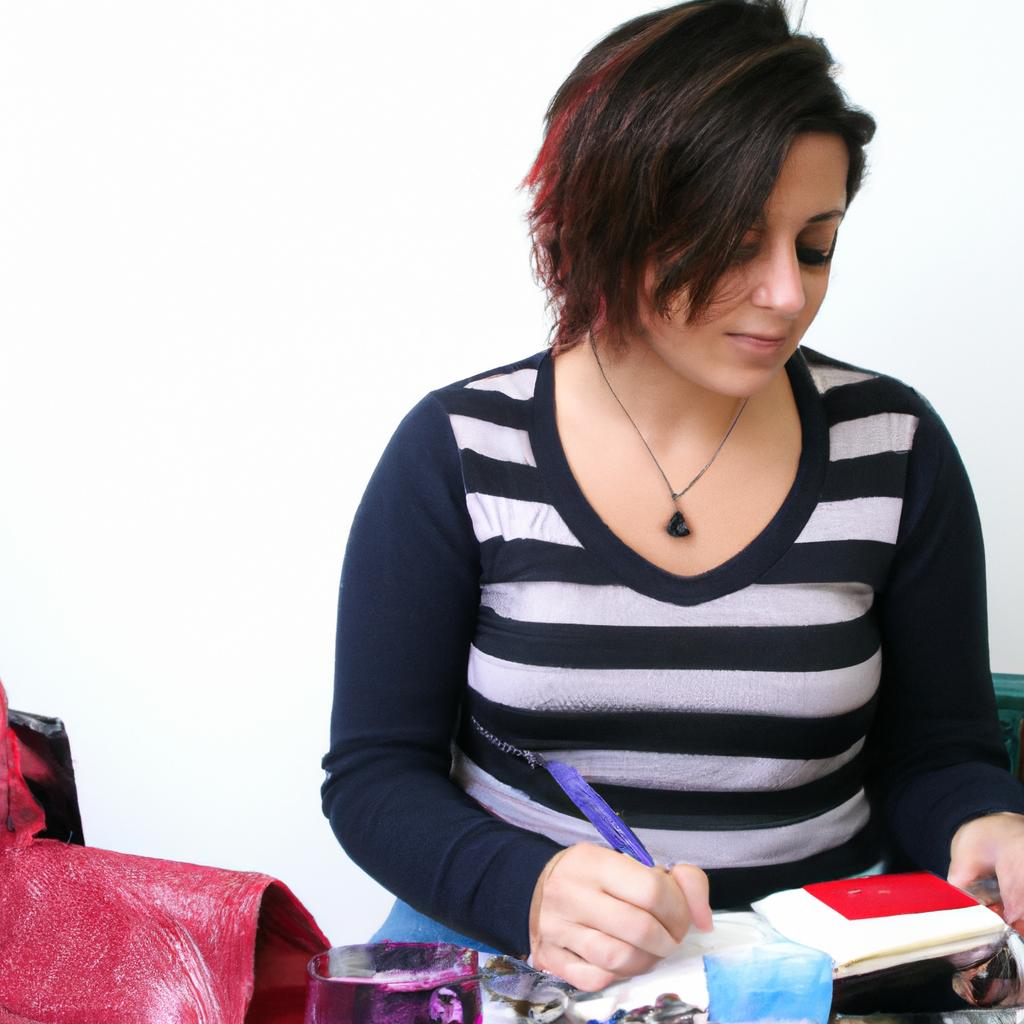Budget-Friendly Fashion Tips: Women’s Clothing and Fashion Finance
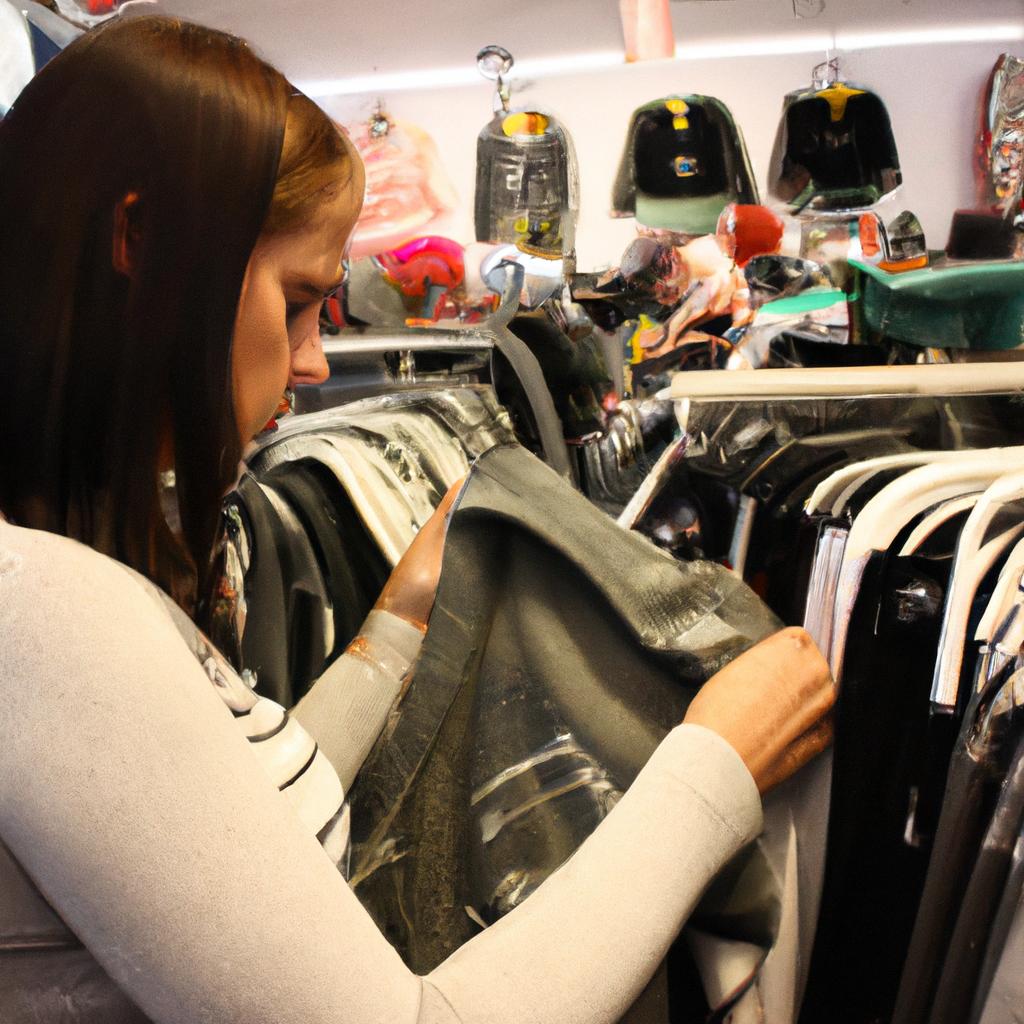
The world of women’s clothing and fashion can be an enchanting realm to explore, with its diverse array of styles, trends, and possibilities. However, navigating this ever-evolving landscape can often come at a hefty price tag that may leave many individuals feeling disheartened or constrained by financial limitations. In the face of such challenges, it becomes essential for women to seek out budget-friendly fashion tips that allow them to express their personal style without breaking the bank.
Consider the case of Sarah, a young professional who aspires to dress stylishly while adhering to her limited budget. Like many others in similar situations, Sarah finds herself torn between wanting to keep up with the latest trends and being mindful of her financial responsibilities. In order to strike a balance between fashionable self-expression and fiscal prudence, she embarks on a journey to discover practical strategies for managing her wardrobe expenses effectively. This article aims to provide insightful guidance on how women like Sarah can make informed choices about their purchases, optimize their existing wardrobes, and cultivate a sustainable approach towards fashion finance. By exploring various cost-saving measures and highlighting affordable alternatives within the realm of women’s clothing and fashion, readers will gain valuable insights into maximizing style while minimizing expenditure.
Evaluate your wardrobe
Imagine this scenario: You open your closet doors, only to find a sea of clothes that you rarely wear. Sound familiar? Many women can relate to the frustration of having a wardrobe filled with items they don’t love or use. To avoid this situation and make the most out of your fashion budget, it’s essential to evaluate your wardrobe regularly.
One way to approach this task is by conducting a thorough inventory of your clothing collection. Take note of each item, including its condition, style, and how frequently you wear it. This process will help you identify any gaps in your wardrobe or pieces that may need replacing due to wear and tear.
To assist you further, here are some bullet points outlining the benefits of evaluating your wardrobe:
- Reduces clutter and creates space for new additions.
- Allows for better organization and ease in finding outfits.
- Saves time when getting ready as you have a clear view of what options are available.
- Helps prioritize spending on key essentials rather than unnecessary duplicates.
Additionally, consider creating a table categorizing different aspects of your clothing collection such as tops, bottoms, dresses, and accessories. The table could include columns for the number of items in each category, their color palette, versatility (can be dressed up or down), and whether they suit various occasions (casual versus formal). This visual representation provides an overview of your current selection while highlighting areas where improvements can be made.
By evaluating your wardrobe regularly using techniques like inventories and tables, you gain insight into what works best for you personally. It enables smarter purchasing decisions moving forward while avoiding unnecessary expenses on duplicate or underutilized items. With this knowledge at hand, let’s move on to the next section: Shop Your Own Closet
Shop your own closet
Once you have thoroughly evaluated your wardrobe and identified the items that are still in good condition, it’s time to delve into the depths of your closet. By taking a closer look at what you already own, you may be surprised to find hidden gems that can revitalize your style without breaking the bank.
Case study: Imagine this scenario – Sarah has been feeling frustrated with her lack of outfits for work. She decides to evaluate her wardrobe and discovers a forgotten blazer tucked away at the back. With a bit of creativity, she pairs it with different tops and skirts she already owns, instantly creating several new professional looks.
To make the most out of shopping your own closet, here are some tips:
-
Mix and match: Experiment with combining different pieces from your existing collection. Try pairing unexpected items together for fresh outfit ideas. Don’t be afraid to mix patterns or textures; sometimes the best combinations come from unlikely pairings.
-
Accessorize strategically: Accessories play a crucial role in transforming an outfit. Consider adding statement jewelry, scarves, belts, or hats to elevate your look effortlessly.
-
Alterations and repairs: If you stumble upon beloved clothing items that no longer fit perfectly or have minor flaws, consider getting them altered or repaired instead of discarding them altogether. A small investment in alterations can bring new life to old favorites.
-
Get creative with layering: Layering is not only practical during colder months but also adds depth and dimension to any ensemble year-round. Experiment with different layers such as cardigans, vests, jackets, or even wearing dresses over pants for an extra stylish touch.
By shopping your own closet and exploring all the possibilities within it, you’ll rediscover pieces that were once overlooked while saving money on unnecessary purchases.
Now let’s explore another strategy to maximize our budget-friendly fashion journey – investing in versatile pieces that offer endless styling options.
Invest in versatile pieces
Building on the concept of shopping your own closet, another effective budget-friendly fashion tip is to invest in versatile pieces that can be styled in various ways. By choosing clothing items that can be dressed up or down and mixed and matched with other pieces in your wardrobe, you can maximize your outfit options without breaking the bank.
Example: For instance, let’s consider a classic white button-down shirt. This timeless piece can be worn tucked into a pencil skirt for a professional look during the day and paired with jeans and sneakers for a more casual yet chic ensemble in the evenings. The versatility of this item allows you to create multiple outfits without needing to purchase additional clothes.
To further illustrate the benefits of investing in versatile clothing, here are some key advantages:
- Cost-effective: Versatile pieces allow you to create numerous outfits from just a few items, reducing the need for constant purchases.
- Time-saving: With well-selected versatile pieces, getting ready becomes easier as you have pre-planned combinations at your disposal.
- Sustainable fashion choice: By opting for multi-functional garments, you contribute to reducing textile waste and promoting conscious consumption.
- Increased creativity: Mixing and matching different elements of your wardrobe encourages experimentation and personal style expression.
Consider the following table showcasing how one versatile dress can be transformed into four distinct looks by changing accessories, shoes, or layering options:
| Outfit | Description |
|---|---|
| Look 1 | Dress with heels and statement necklace |
| Look 2 | Dress with ankle boots and leather jacket |
| Look 3 | Dress layered over turtleneck with knee-high boots |
| Look 4 | Dress belted at waist with sandals |
By embracing this approach to dressing, not only do you save money but also unlock countless possibilities within your existing wardrobe. Transitioning seamlessly into our next section about “Mix and match,” we will explore how combining different garments can elevate your style even further.
Mix and match
Transitioning from the previous section on investing in versatile pieces, another effective way to achieve a budget-friendly wardrobe is through mixing and matching. By combining different garments and accessories creatively, you can create numerous outfit options without having to purchase new items for every occasion. Let’s consider an example to illustrate this concept.
Imagine you have a basic black dress that can be dressed up or down depending on the occasion. For a casual daytime look, pair it with a denim jacket and sneakers. To elevate the dress for an evening event, accessorize with statement jewelry and add heels. This simple example demonstrates how one piece of clothing can be transformed into multiple outfits by switching up the styling elements.
To further guide your mix-and-match strategy, here are some tips:
- Invest in neutral-colored basics: Neutral shades like white, black, beige, and gray are versatile and easy to match with other colors.
- Use layers: Layering different pieces not only adds visual interest but also allows for more versatility in temperature changes throughout the day.
- Experiment with patterns and textures: Mixing different patterns and textures can add depth and personality to your outfits while making them visually appealing.
- Accessorize strategically: Accessories such as scarves, belts, hats, or statement jewelry can completely change the look of an outfit without breaking the bank.
Consider the following table as inspiration for potential combinations using common wardrobe staples:
| Outfit Combination | Description |
|---|---|
| White T-shirt + High-waisted jeans + Denim jacket | A classic casual look suitable for everyday activities |
| Black blazer + Printed blouse + Tailored trousers | A polished ensemble ideal for work meetings or business events |
| Striped top + Midi skirt + Sneakers | An effortlessly chic outfit perfect for running errands |
By embracing mix-and-match fashion strategies along with incorporating these helpful tips into your shopping habits, you can build a diverse collection of outfits without overspending or cluttering your wardrobe.
Transitioning into the subsequent section about considering second-hand options, it is important to explore all avenues when seeking budget-friendly fashion choices.
Consider second-hand options
Building a versatile wardrobe is essential when trying to maintain a budget-friendly approach to fashion. One effective strategy that can help achieve this is the concept of mixing and matching different pieces within your wardrobe. By combining various items creatively, you can create multiple outfits using fewer clothing items.
For instance, consider this hypothetical scenario: Sarah has a limited budget but wants to have a diverse range of outfits for her upcoming trip. Instead of buying new clothes, she decides to mix and match what she already owns. She pairs a floral skirt with a plain white t-shirt one day and then transforms it into an elegant outfit by adding a blazer on another day. Mixing and matching allows her to create distinct looks without spending additional money.
To effectively mix and match, here are some practical tips to keep in mind:
- Choose neutral-colored basics: Investing in staple pieces like black trousers or white shirts provides numerous options for combinations.
- Experiment with layering: Layering different garments not only adds depth to your outfit but also offers versatility as layers can be removed or added depending on the occasion or weather.
- Accessorize strategically: Accessories such as scarves, belts, or statement jewelry can instantly transform an outfit, making it appear fresh and new even if worn before.
- Consider patterns and textures: Combining clothing items with varying patterns (e.g., stripes with florals) or textures (e.g., silk with denim) creates visual interest while maximizing the use of existing pieces.
By incorporating these mix-and-match strategies into your fashion choices, you can unlock endless possibilities from your current wardrobe while staying within your budget constraints.
| Mix & Match Strategies | Benefits |
|---|---|
| Neutral-colored basics | Versatile options |
| Experiment with layering | Adaptability for different occasions |
| Strategic accessorizing | Enhanced style without extra cost |
| Play with patterns/textures | Visual interest and variety |
“With the concept of mixing and matching in mind, let’s now explore another budget-friendly option – considering second-hand clothing.”
Take advantage of sales and discounts
Building on the idea of finding affordable fashion options, it is important to highlight the value of taking advantage of sales and discounts. By keeping an eye out for these opportunities, women can save a significant amount of money while still staying fashionable.
One example that illustrates the benefits of shopping during sales or discount periods is Sarah’s experience. Sarah had her eye on a dress she had been admiring for weeks but hesitated due to its price tag. However, she decided to wait patiently until a seasonal sale event arrived. During this time, the dress was marked down by 50%, allowing her to purchase it at a fraction of its original cost.
To further emphasize the advantages of seeking out sales and discounts in women’s clothing, consider the following points:
- Markdowns and clearance sales provide an opportunity to obtain high-quality garments without breaking the bank.
- Online flash sales often offer significant discounts for limited periods, enabling budget-conscious individuals to snag great deals with proper planning.
- Loyalty programs and newsletters from favorite brands may grant access to exclusive pre-sale events or promotional codes, making stylish pieces more financially accessible.
- End-of-season sales are excellent opportunities to stock up on wardrobe essentials at reduced prices before new collections arrive.
Table: Budget-Friendly Fashion Tips
| Tip | Description |
|---|---|
| Consider second-hand items | Explore thrift stores or online platforms for gently used items. |
| Take advantage of sales | Shop during discounted periods or utilize promotional codes. |
| Opt for versatile pieces | Invest in clothes that can be mixed and matched in various ways. |
| Embrace timeless styles | Classic designs tend to have longer shelf lives than trendy ones. |
By incorporating these strategies into one’s shopping routine, significant savings can be realized without compromising personal style preferences.
In summary, taking advantage of sales and discounts is crucial for those seeking to maintain a budget-friendly approach to fashion. Sarah’s experience serves as an example of how waiting patiently can lead to significant price reductions on desired items. Additionally, the inclusion of various tips such as exploring thrift stores or online platforms, utilizing promotional codes, and investing in versatile and timeless pieces can help individuals build a stylish wardrobe without straining their finances. By practicing these strategies, women can navigate the world of fashion while being mindful of their budgets.


